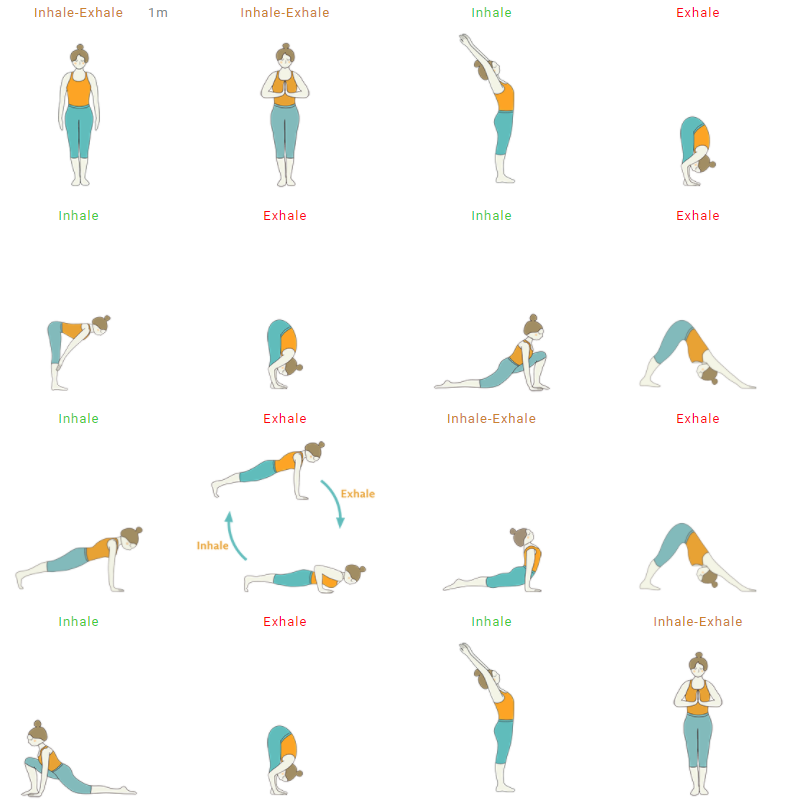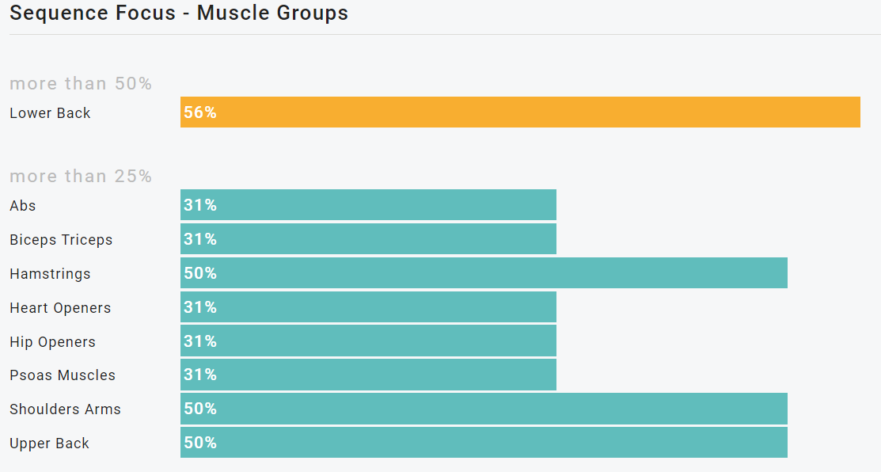
16th September 2020
Sun salutations are the foundation of many contemporary yoga practices but are actually an ancient vedic ritual rather than a form of exercise. The sun salutation is a graceful set of postures performed at dawn, facing the rising Sun and worshipping the Sun God, in Hindu mythology. The traditional salutation has 12 steps to represent the 12 manifestations of the Sun God. The sequence was generally practiced in the traditional, religious way, but over the years this practice has evolved from the ancient origins and is today, an integral part of yoga practice. The sequence of moves take you from standing postures, forward and back bends to inversions (where the head is below the heart such as in forward fold or downward dog), to the floor, back through an inversion before standing again.
You can practice it slowly with multiple breaths at each stage or in a more dynamic fashion using the breath to move from one posture to the next.
Over the years I have had a love hate relationship with Surya Namaskar (which is the Sanskrit for Sun Salutation or Salute to The Sun). When I first returned to yoga with a chronic back condition I found the step through from downward dog back to forward fold aggravated my precarious lumber discs. It was only through regular yoga and strengthening of the core and other muscle groups that I began to feel more able to attempt the sequence.
I’ve attended Ashtanga and Vinyasa classes where the sun salutation is utterly core to the class with the sequence repeated many times, often with variations and additional asanas incorporated. These can be hard core practices leaving the participants dripping with sweat but invigorated for the challenging static postures that are to come. The practice helps warm-up th ebody, preparing the muscles and joints, increasing blood flow and heat in the body which helps prevent injuries with other postures.
In my own teaching nowadays I tend to use sun salutations as part of the warm up or to bring a bit more energy and heat into a class. We will begin with gentle stretching before a few sets of sun salutations generally using Surya Namaskar A. The A and B sequences are fro the Ashtanga stable of yoga (B is a similar but even more challenging sequence incorporating chair pose and Warrior 1 along with the other asanas). I don’t follow the Ashtanga principles entirely – few of my students are able to cope with the jumps or full chaturanga so we modify.
This is my modified Sun Salutation (A)
- Mountain Pose – Tadasana
Inhale and exhale - Bring the hands to heart centre (anjali mudra) before inhaling and sweeping the hand round and up to a back bend in extended mountain pose
- Swan dive down (hands through heart centre or sweeping wide) exhaling into a standing forward fold
The knees can be soft here - Inhale up to a standing table top with the hands on the shins
- Exhale down to a standing forward fold with bent knees and palms on the ground
- Inhale and step the right leg back to a low runners lunge
You can hold this posture for a few breaths and enjoy the hip flexor stretch - Exhale the left leg back into a downward facing dog
Again you can hold the posture for a few breaths
Walk the dog, bending the knees for the first round - Bring yourself to a high plank pose (or on knees and elbows if required)
- Drop your knees then hips then chest to the ground keeping the elbows tucked in (or do a full chaturanga if you are able)
- Inhale and lift the chest to a baby cobra, a hanging cobra or upward facing dog
You can extend the backbend here and hold for a few breaths - Exhale and lift the hips into downward dog turning over on your toes
- Inhale the right leg forward into a low lunge
- Exhale the left leg forward so that the feet are together and you are in a standing forward fold
- Sweep the arms up and inhale to bring yourself into a backbend and extended mountain pose
- Exhale the hands to heart centre and repeat with the left side leading
If that all sounds a bit complicated when written down don’t worry. It’s much easier in class where I teach it slowly bit by bit giving verbal instructions as we move through the sequence.
Download pdf instructions for Sun Salutation
You can download the graphics for this sequence, plus my suggested additional postures here.
Watch the Sun Salutation video
You can see what a good all body workout it is in the graphic below:

Once we have been through a couple of rounds of this I may add some variations into the sequence:
- Add rotations or back bends to the lunge
- Add variations to the downward dog such as dolphin, three legged dog, knee to elbow, nose or opposite elbow, scorpion tail from three legged dog, wild thing or fallen triangle
- Bring more strength work to the plank by holding it for a longer duration, moving into side planks perhaps with a tree leg or starfish variation
These are pretty tough additions and I’ll generally only introduce them with a class familiar with sun salutations and with the strength to cope with the additional postures. I will always have shared lower level variations with my regular students so, for instance, those with less upper body strength know what they can do to change the postures for instance by working on the knees rather than the feet in plank.
They may be tough but we end the sequence with all those feel good endorphins running through the body and a huge sense of achievement.
This is also where we learn to address the inevitable ego that arises in class. In our heads we all want to do the full postures with perfect alignment but our bodies have other ideas. That’s fine. We listen to the body and adapt to suit where we are today. I’m frequently out-asana-ed by some of my more bendy students. Frankly as a teacher that’s embarrassing! But I’m no spring chicken and I’m genetically different to them so my body simply won’t do everything theirs can. And of course I carry a lifetime of injuries which I have to be mindful of when wanting to push beyond what I should be doing.
And if you simply want a practice that is more meditative and less intense take steps 1 to 5 (the forward fold) then jump to 14 to the standing backbend. Take it slowly, close your eyes, focus on the breath and enjoy a lovely start to the day.